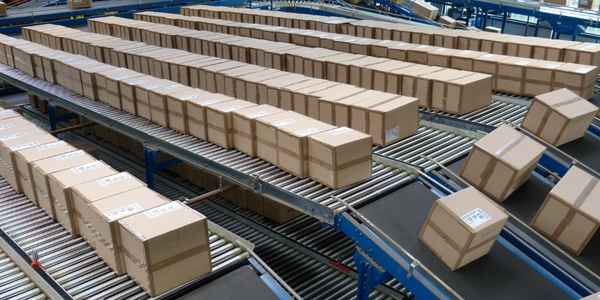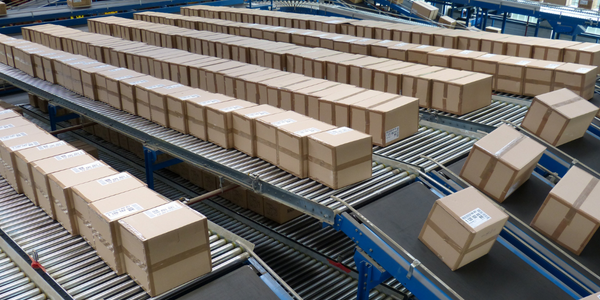Technology Category
- Drones - VTOL & VTOL Hybrid Drones
- Infrastructure as a Service (IaaS) - Hybrid Cloud
Applicable Industries
- Packaging
- Retail
Applicable Functions
- Product Research & Development
- Quality Assurance
Use Cases
- Experimentation Automation
- Intelligent Packaging
Services
- Hardware Design & Engineering Services
- Testing & Certification
About The Customer
Crate and Barrel is a retail company founded by Gordon and Carole Segal. The company has a rich heritage built on a shared passion for the customer experience. The company's product line is shaped by customer engagement and feedback, with a selection of curated products from artisans around the world. The company prides itself on its quality craftsmanship, which is at the heart of their offerings. Crate and Barrel has a strong connection to its customers, which has shaped their product line and brand. The company has a team dedicated to site design and user experience, which is responsible for translating the company's unique aesthetic and customer-centric approach into their digital offerings.
The Challenge
Crate and Barrel, a renowned retail company, was faced with the challenge of maintaining its unique aesthetic and customer-centric approach while transitioning into the digital era. The company had a rich heritage built on a shared passion for customer experience, with customer engagement and feedback shaping the selection of curated products from artisans around the world. However, translating this customer-centric approach to their digital offerings was a significant challenge. The company needed to ensure that the quality craftsmanship, which was at the heart of their offerings, was not lost in the digital translation. The challenge was particularly evident in the case of selling custom furniture online, a multi-year project that had to meet existing standards while introducing a functionality that did not exist when the company's founders established the brand's shopping philosophy.
The Solution
To address this challenge, Crate and Barrel adopted a hybrid organizational model, blending multiple organizational models and running different models in parallel. The company positioned designers in a temporary cross-functional team to work on a focused project with a clear deadline. Once the project was completed, they returned to the centralized design team. This approach allowed the company to maintain its unique aesthetic and customer-centric approach while introducing new digital functionalities. The company also adopted a systematic process for creating new features, starting with information gathering and ending with tweaks and modifications based on A/B tests and customer feedback. The company used InVision for prototyping, communications around design concepts, user testing, and stakeholder design presentations.
Operational Impact

Case Study missing?
Start adding your own!
Register with your work email and create a new case study profile for your business.
Related Case Studies.

Case Study
Improving Production Line Efficiency with Ethernet Micro RTU Controller
Moxa was asked to provide a connectivity solution for one of the world's leading cosmetics companies. This multinational corporation, with retail presence in 130 countries, 23 global braches, and over 66,000 employees, sought to improve the efficiency of their production process by migrating from manual monitoring to an automatic productivity monitoring system. The production line was being monitored by ABB Real-TPI, a factory information system that offers data collection and analysis to improve plant efficiency. Due to software limitations, the customer needed an OPC server and a corresponding I/O solution to collect data from additional sensor devices for the Real-TPI system. The goal is to enable the factory information system to more thoroughly collect data from every corner of the production line. This will improve its ability to measure Overall Equipment Effectiveness (OEE) and translate into increased production efficiencies. System Requirements • Instant status updates while still consuming minimal bandwidth to relieve strain on limited factory networks • Interoperable with ABB Real-TPI • Small form factor appropriate for deployment where space is scarce • Remote software management and configuration to simplify operations

Case Study
Digital Retail Security Solutions
Sennco wanted to help its retail customers increase sales and profits by developing an innovative alarm system as opposed to conventional connected alarms that are permanently tethered to display products. These traditional security systems were cumbersome and intrusive to the customer shopping experience. Additionally, they provided no useful data or analytics.

Case Study
How Sirqul’s IoT Platform is Crafting Carrefour’s New In-Store Experiences
Carrefour Taiwan’s goal is to be completely digital by end of 2018. Out-dated manual methods for analysis and assumptions limited Carrefour’s ability to change the customer experience and were void of real-time decision-making capabilities. Rather than relying solely on sales data, assumptions, and disparate systems, Carrefour Taiwan’s CEO led an initiative to find a connected IoT solution that could give the team the ability to make real-time changes and more informed decisions. Prior to implementing, Carrefour struggled to address their conversion rates and did not have the proper insights into the customer decision-making process nor how to make an immediate impact without losing customer confidence.

Case Study
IoT Data Analytics Case Study - Packaging Films Manufacturer
The company manufactures packaging films on made to order or configure to order basis. Every order has a different set of requirements from the product characteristics perspective and hence requires machine’s settings to be adjusted accordingly. If the film quality does not meet the required standards, the degraded quality impacts customer delivery causes customer dissatisfaction and results in lower margins. The biggest challenge was to identify the real root cause and devise a remedy for that.

Case Study
Zenon the Ideal Basis for An Ergonomic HMI
KHS develops and produces machines and equipment for filling and packaging in the drinks industry. Because drinks manufacturing, filling and packaging consist of a number of highly complex processes, the user-friendly and intuitive operation of equipment is increasingly gaining in significance. In order to design these processes as simple as possible for the user, KHS decided to introduce a uniform, transparent and standardized solution to the company. The HMI interface should meet the requirement for people with different qualifications and enable them to work on a standard platform.








